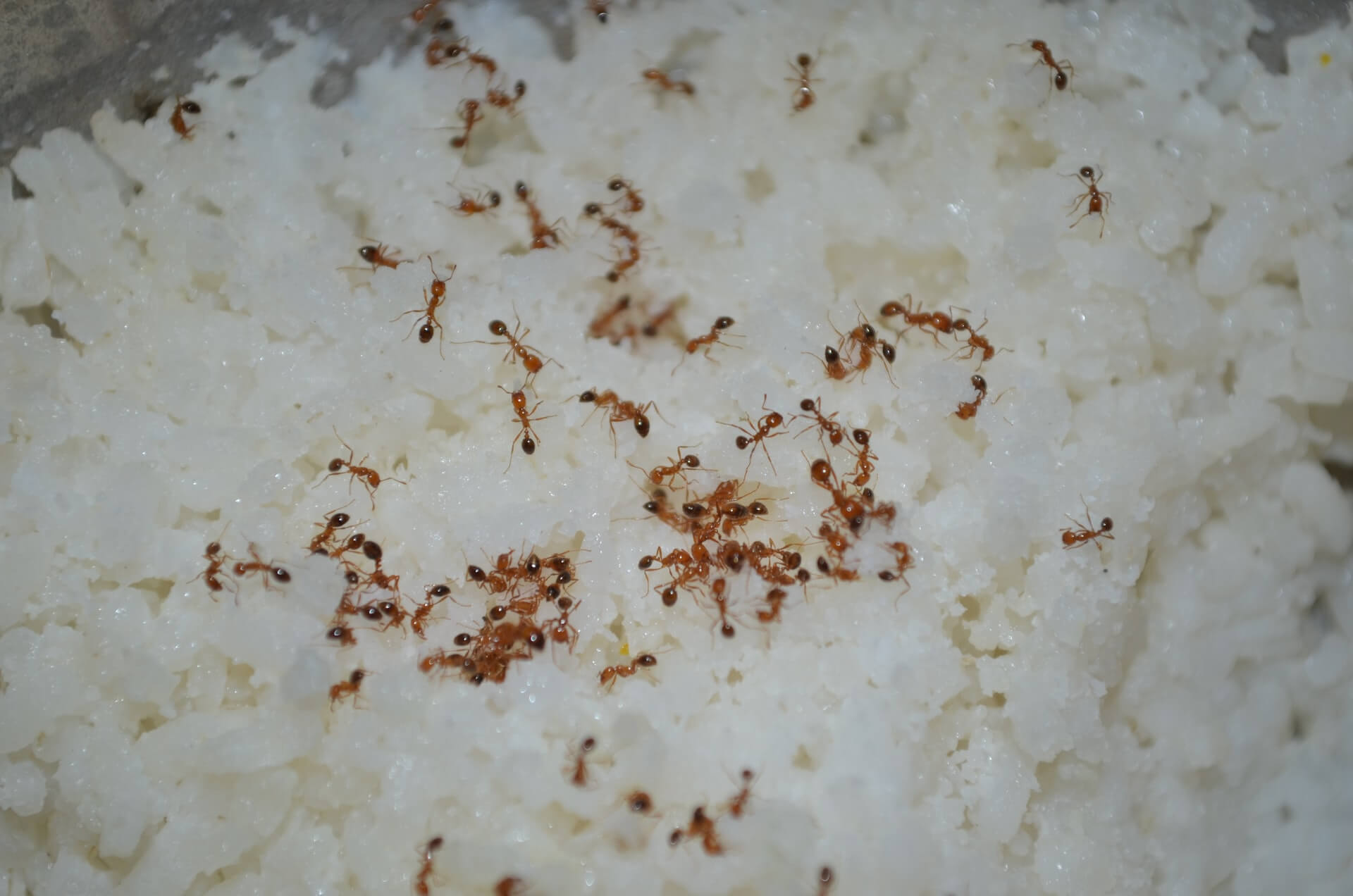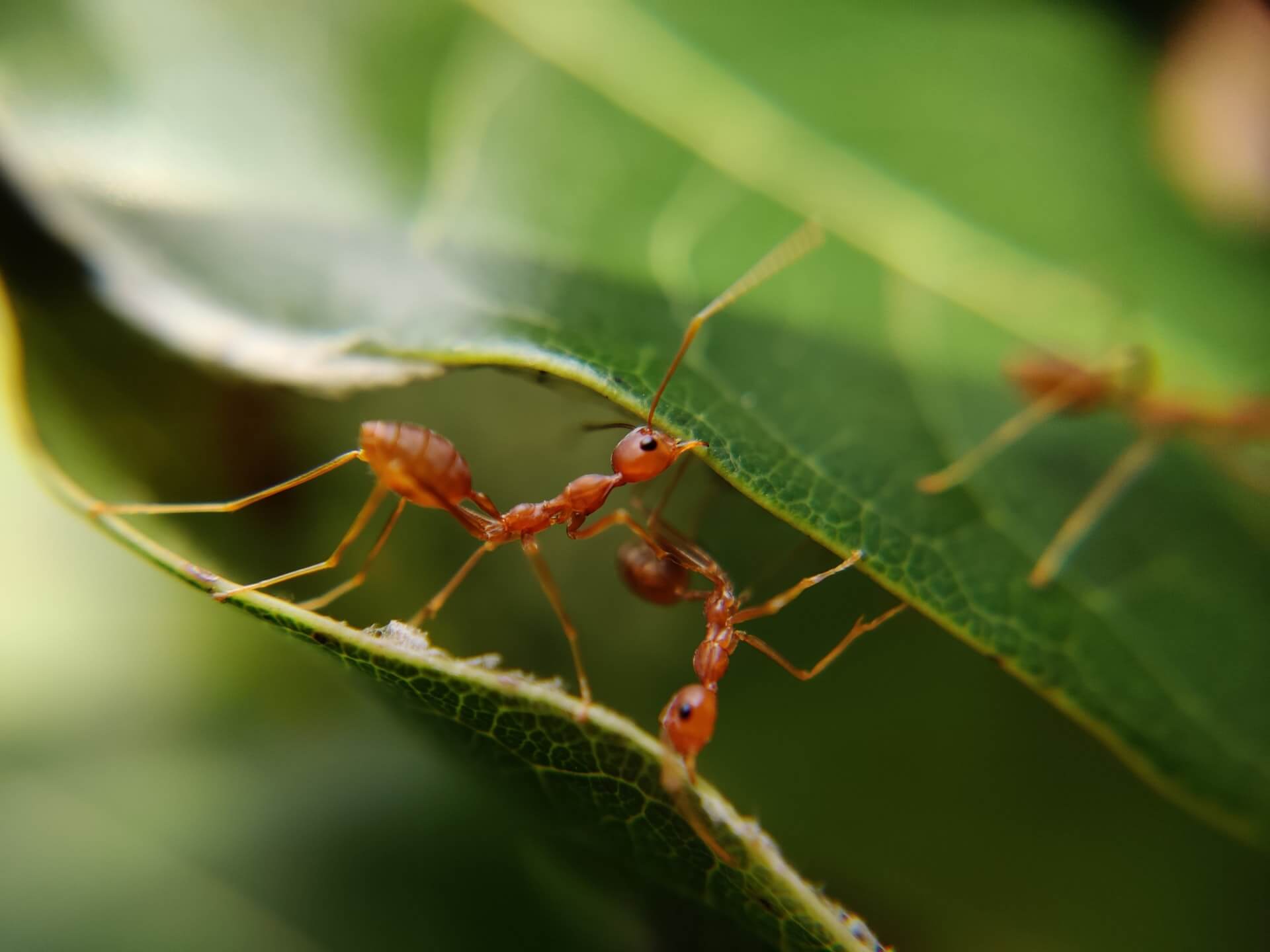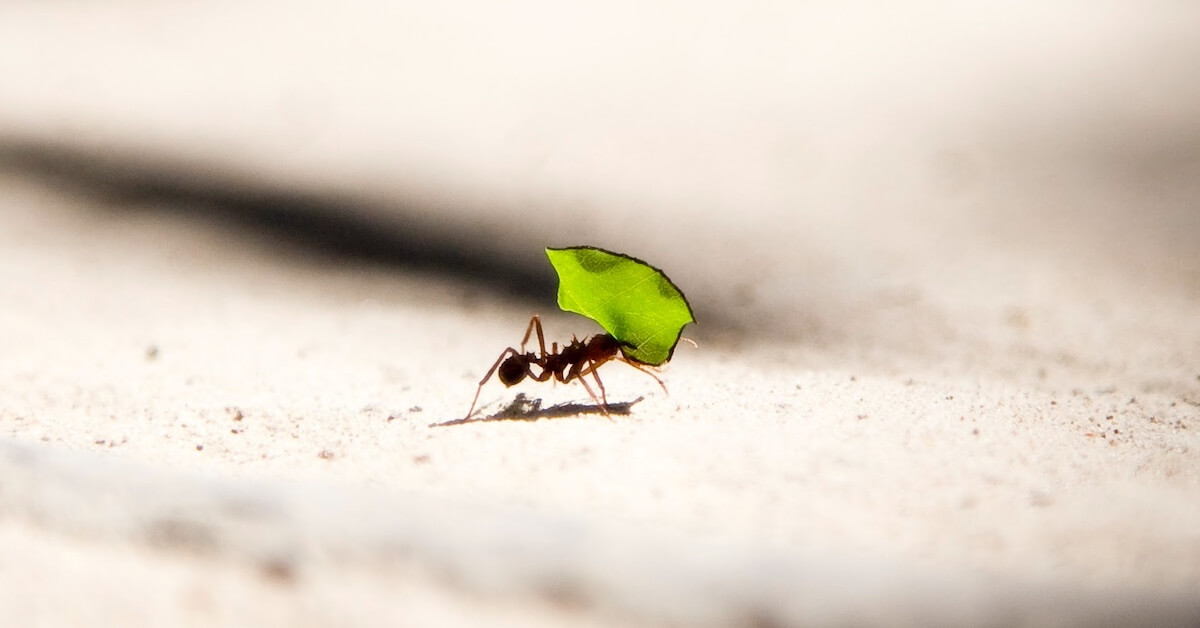Even if they aren’t the worst pests you can imagine sharing your home with, ants easily occupy a spot in the top 10—right next to silverfish, roly-polies, and earwigs. (And let’s not even mention bed bugs.)
If you’ve spotted one ant in your home, chances are it won’t be alone for too long—cue the scary music!
Ants are extremely social creatures, and they tend to form huge ant colonies around a single queen. After the entire ant family has made itself at home in your apartment, it will become increasingly difficult to get rid of them. Your peace of mind—and secret chocolate stash—might be at risk.
This is where we come in! Together, we’ll dive deep into everything you need to know about ants in your home: where they come from, how to repel them, and how to get rid of ants once and for all—with the help of natural remedies.
FYI: Getting rid of an ant infestation in your rental is not covered by most renters insurances. Lemonade’s renters insurance is no exception. However, in the case of a severe infestation, it’s generally your landlord’s responsibility to address the problem and cover costs. However, if the ants invaded your home because of your own behavior, meaning you could have prevented the infestation… that’s a different story.
But let’s start at the beginning, aka the source of all evil:
Where are all these ants coming from?
Watching ants at work in their natural habitat, such as your garden, can be quite exciting (and even therapeutic!). There’s a reason why ant farms are a thing. After all, not everyone can carry 100 times their own mass or move in perfect coordination through a network of trails.

So, why do these mini-hulks bother straying into your apartment in the first place?
Simply put, it’s mainly about food. And it’s pretty damn cool, despite being gross.
Usually, ants feed on honeydew secreted by aphids. They leave their home, the anthill or nest, to pay a regular visit to the aphid colony. However, there are seasons with relatively few aphids, which in turn means that sweet, sweet honeydew is scarce. During these dire days, the ants are forced to look for alternative food sources. So-called ‘scout ants’ are sent out on a food-seeking mission, which might land them in your house.
If the scout ants’ mission is a success—meaning they’ve spotted accessible foods, such as cookie crumbs, an open jar of peanut butter, or some spilled orange juice on your countertop—they’ll likely want to return with friends. To find their way back to the food jackpot, they’ll mark their tracks with pheromones.
Fun fact: The more attractive the edibles, the stronger the scent trail the scouts leave behind. Ants prefer foods that are sugary or high in protein, so keep your Sour Patch Kids and cottage cheese stowed away.
Another reason why ants might stray into your home is because they are hunting for water. Especially during the dry season, you might find them in your bathrooms, kitchen, or other damp areas.

How can you prevent an ant infestation?
Fortunately, we’re not completely helpless against these little creatures stealing our food. Instead, there are plenty of things you can do to repel ants or to hinder them from marking your home as their private pantry:
- Clean up thoroughly after each meal. This does not only include storing or throwing out leftover food and washing dirty dishes, but also cleaning up any crumbs around your toaster, washing up used juice glasses, wiping down sticky countertops, etc.
- Don’t leave pet food sitting around. Once your fur baby is done eating, clean up the leftovers right away.
- Make sure your garbage can has a tight-fitting lid, and empty it frequently.
- Routinely check your walls and windows for potential cracks and crevices. Are your window frames sealed, or could they use a bit of silicone to patch up tiny holes and other ant entranceways?
- Avoid accidentally bringing ants with you into your home. Have you upped your home’s coziness factor by installing a fireplace? Fun! However, be careful not to carry ant-infested firewood into your home. The same goes for new plant babies you’ve adopted from your favorite flower shop. Give them a thorough ant check before introducing them to their new home.
- If you spot an ant, take it outside immediately, so it doesn’t have time to mark its trail. Let the ant walk onto a piece of paper, put a glass over it—et voilá, now you can safely free it outside.
If all goes well, with the help of these tips you won’t attract ants to your home in the first place, which is a lot easier than solving a more serious infestation.
How ants can cause damage to you and your home
Ants have a certain gross-out factor, and they’ll gorge on your food. But certain species are even more troublesome.
Most of us probably know the unpleasant sensation that follows an ant bite or sting, especially when encountering fire ants. The experience can be quite unpleasant, and your skin will burn at first. The good news: it’s usually harmless.
However, there are some more dangerous scenarios that can be caused by ants: If the small insects nest in your electrical appliances, for instance, they can cause cable fires.
In addition, there are some other ant species that can do some real damage to your property or your health…
- Carpenter ants feel right at home in wooden structures. They can damage your furniture and even the roof beams. They don’t actually eat the wood, but rather build tunnels into it. But how do you know if you have carpenter ants in your house? They are usually black and quite big, ranging from 3.4 to 13 mm in length. As they create their tunnel systems, you’ll be also able to spot wood shavings around your house.
- Another species to watch out for are the so-called pharaoh ants, small amber-colored ants, that can spread germs and even carry diseases.
Have a look at this resource to help you identify the most common ant species in the US.
How can you get rid of ants in your home?
Okay, so you weren’t paying attention and one of those intrepid scout ants found your cookie cabinet and went wild with his pheromones. Now you’ve got a full-blown ant party on your hands. There’s still hope—try these tricks.
Disturb the ants’ sense of orientation with a DIY ant spray
As mentioned above: If ants find a promising food source, they will mark it with the help of pheromones. If you lay out certain herbs in problem areas, though, they might cause the ants to lose their sense of direction. But which scents do ants dislike? Cloves, cinnamon powder, thyme, marjoram, chervil, and garlic are all options. Also, ants can’t stand lemon juice, peppermint, or vinegar. Take some water, mix it 50/50 with either lemon juice or white vinegar, put it into a spray bottle or on a cloth, and spray it where ants may have gotten in. Alternatively, mix some drops of peppermint oil (or other essential oils such as tea tree oil) with water, and do the same.
Find out where they’re sneaking in—and block it
To seal the ants’ entry points, you need to track them first. And to be completely honest, that can take some time. Follow the ant trail to check where the little insects are coming and going from. If you find it, you can consider yourself lucky and seal the hole or crack with some silicone.
It’s worth a try, but we can’t promise that you’ll actually find the way they’re accessing your home. Ants can easily squeeze through the smallest cracks, which may not even be visible to the human eye.
Draw a line (literally)
You’ve probably come across one of those YouTube videos showing ants refusing to cross a chalk-painted line or circle. We recommend trying out this little trick yourself. If you think ants are entering your home via the patio door, draw a chalk line right in front of it. You can also buy chalk powder and scatter it as an additional ant-repellent.
Relocate the ants
Last but not least: If you know exactly where the ants’ nest is located outside your home, try relocating it. All you need is a flower pot, which you can fill with straw or wood wool. Put the pot over the anthill and wait a few days. If everything goes well, the ants will move into the pot, and you can go ahead and free them someplace else.

Additional hacks to get rid of ants
Have you tried out some of our tips, only to find that the ant trail in your kitchen has grown by a couple of inches?
If that’s the case, it’s time to check out our slightly more aggressive tactics to tackle your ant problem.
- Baking soda. When ants ingest baking soda, their stomachs bloat, and they’ll die from it. Doesn’t sound very humane, does it? If you want to try it anyway, mix the baking soda with some sugar to attract the small insects.
- Diatomaceous earth (silicon dioxide). Ants hurt their outer shell on the DE particles. As a result, they cannot retain water, and simply dry out. This natural ingredient is also used to combat bed bugs.
- Ant traps. You can easily create DIY ant bait stations from something as simple as a bowl of sugary water. Once they’ve fallen in, you can easily carry the ants outside. Alternatively, you might want to buy artificial ant baits filled with poisonous content, which the ants ingest and carry to their nest.
Still facing an ant army?
If so, it’s time to seek out a professional pest control company. An exterminator will usually determine the type of ants that have invaded your home first, and then take targeted action.
It’s best to check what method they’ll be using to get rid of the ants—especially if you have pets or kids—so you can make sure it’s as environmentally friendly as possible.
In some cases, it pays off to call in experts early on, especially if your infestation is caused by carpenter or pharaoh ants.
Good luck with your hunt!




